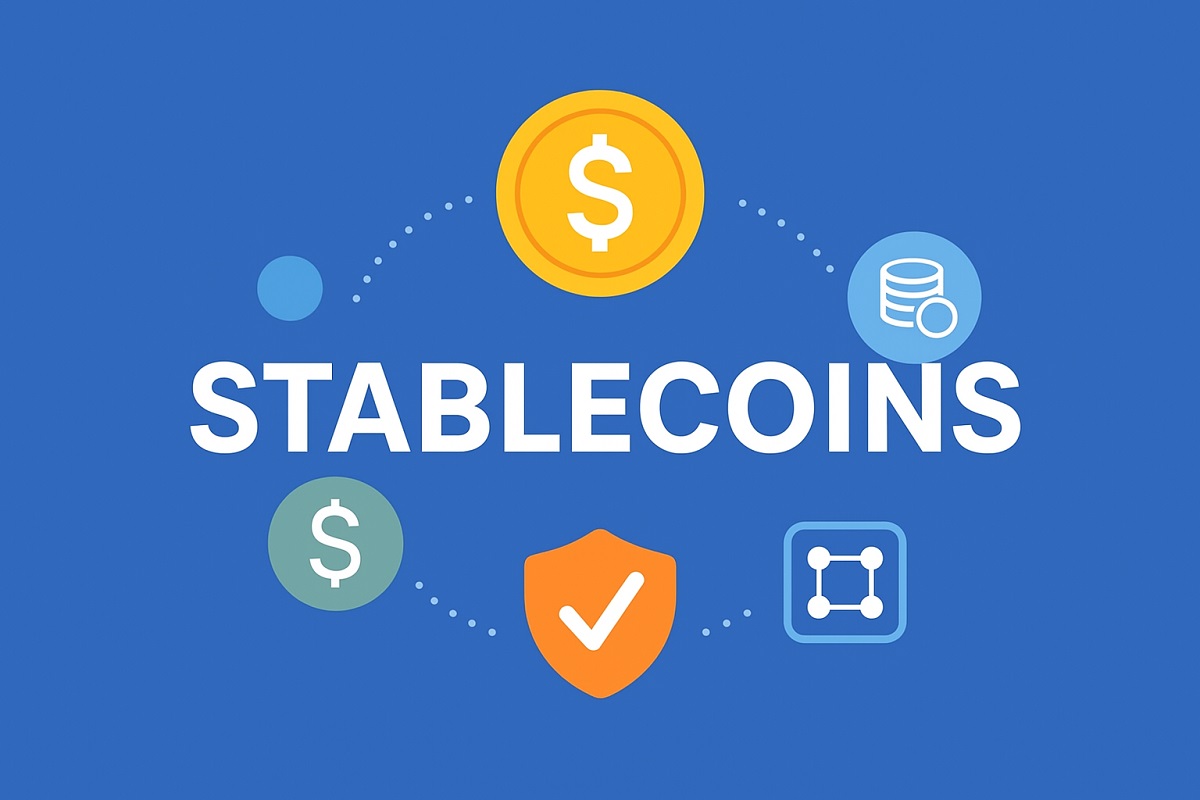10 Common Mistakes to Avoid When Investing in Stablecoins

Stablecoins are being marketed as the “safe haven” of the cryptocurrency realm—digital currencies that are pegged to fiat currencies like the US dollar, designed to minimize volatility. However, though they offer price stability, they’re not entirely risk-free. The majority of investors enter stablecoins under the impression that they are insulated from the volatility of crypto markets, only to discover hidden pitfalls.
Let us break down the most common mistakes investors make with stablecoins—and how to avoid them.
1. Believing All Stablecoins Are Created Equal
All stablecoins are not created equal. There are three broad categories:
- Fiat-backed (e.g., USDC, USDT): Backed by fiat currency reserves.
- Crypto-backed (e.g., DAI): Backed by collateral in the form of other cryptocurrencies.
- Algorithmic (e.g., UST): Left to depend on smart contracts for their peg.
Mistake: Assuming all stablecoins are equally safe.
Reality: Algorithmic stablecoins have collapsed in the past under stress (e.g., TerraUSD in 2022). Even fiat-backed coins can break if their reserves are not transparent or audited.
Tip: Use stablecoins that have established transparency and regulatory compliance, such as USDC or DAI2.
2. Ignoring Reserve Transparency
Stablecoins are only as trustworthy as their backing. If the issuer doesn’t disclose how reserves are held or audited, you’re flying blind.
Mistake: Investing in stablecoins without verifying reserve audits.
Reality: Certain issuers have been accused of misrepresenting their reserves or not going through periodic audits.
Tip: Seek third-party audit reports and real-time reserve disclosures. Circle (issuer of USDC) and Paxos (issuer of BUSD) are transparent.
3. Thinking Stablecoins Are Risk-Free
The name “stablecoin” implies security—but they’re not immune to:
- Smart contract errors
- Regulatory clampdowns
- Liquidity squeezes during periods of market stress
- De-pegging incidents
Mistake: Using stablecoins as long-term investments without knowing risks.
Reality: Stablecoins can de-peg, especially under panic. Technical flaws or legal issues can also impact their value.
Tip: Use stablecoins for short-term stability or hedging—not as a fundamental investment vehicle.
4. Overlooking Regulatory Risks
Governments are figuring out how to regulate stablecoins. This introduces the threat of arbitrary bans, restrictions, or involuntary redemptions.
Mistake: Investing too much in stablecoins with little attention to legalities.
Reality: Regulatory changes can influence the issuance, redemption, or trading of stablecoins. Regulatory changes can, for example, ban algorithmic stablecoins or require reserve transparency.
Tip: Monitor local and global regulations. Diversify across compliant stablecoins and exchanges.
5. Misunderstanding Use Cases
Stablecoins are well-suited for:
- Hedging crypto volatility
- Facilitating cross-border transactions
- Earning yield on DeFi protocols
But not capital gains.
Mistake: Expecting stablecoins to appreciate in value.
Reality: Stablecoins are pegged to fiat currency. Their value doesn’t change—$1 remains $1. You won’t get rich with them.
Tip: Use stablecoins strategically—for liquidity, yield farming, or gatewaying crypto and fiat—instead of for speculation.
6. Failing to Diversify Across Stablecoins
Putting all your capital into one stablecoin increases exposure to its specific risks.
Mistake: Putting all your coins into a single stablecoin (e.g., USDT).
Reality: If the coin is hit with a regulatory freeze or de-peg, your entire position is at risk.
Tip: Diversify across a few stablecoins like USDC, DAI, and BUSD to reduce single-token risk.
7. Unsecured Platforms for Storing Stablecoins
Where you store your stablecoins matters. Exchanges get hacked, wallets get hacked, and platforms freeze your money.
Mistake: Leaving stablecoins on centralized exchanges without security options.
Reality: You might lose access if an exchange is hacked or shuts down.
Advice: Use hardware wallets or proven custodial services. Turn on two-factor authentication and store private keys securely.
8. Chasing Unsustainable Yields
Certain DeFi platforms pay high rates of return on stablecoin deposits—but perhaps they are using a risky approach or unsustainable tokenomics.
Mistake: Staking stablecoins in high-yield platforms without research.
Reality: Most platforms that provide double-digit APYs fail under market pressure or are actually Ponzi schemes.
Tip: Look into the business model of the platform, its audit history, and the reputation within the community before sending in money.
9. Overlooking Gas Charges and Transaction Charges
Transfers of stablecoins on certain blockchains (like Ethereum) can be expensive in gas charges.
Mistake: Assuming that stablecoin transfers are always cheap.
Fact: They can eat into your profit, especially when the network is congested.
Advice: Use stablecoins on low-fee blockchains like Solana, Polygon, or Layer 2 solutions where you have the option.
10. Lack of an Exit Strategy
Markets can turn quickly. When a stablecoin starts to de-peg or is under regulatory scrutiny, you need to have a strategy.
Mistake: Having stablecoins sitting without a plan for how to redeem or get out.
Reality: Redemption mechanisms vary. Some require KYC, others will be stopped in times of crisis.
Advice: Be able to exit your stablecoins to fiat or other cryptos easily. Have accounts on multiple platforms for ease.
FAQs
1. Are stablecoins completely safe?
No. While less risky than other cryptocurrencies, stablecoins are subject to risks including de-pegging, regulatory changes, and technical failures.
2. Which stablecoins are safest?
Fiat-backed stablecoins with transparent reserves and regular audits—like USDC and BUSD—are safer.
3. Can stablecoins be used to earn passive income?
Yes. You can earn yield by lending stablecoins to DeFi protocols or staking them in liquidity pools. But always consider the risk profile of the platform.
4. How do I store stablecoins?
Store securely in cold wallets—ideally, hardware wallets—for long-term holdings. Don’t keep a lot on exchanges unless actively trading.
5. How do I know whether a stablecoin is well-backed?
Check for the issuer’s website audits, third-party verifications, and regulation adherence. Transparency breeds trust.

